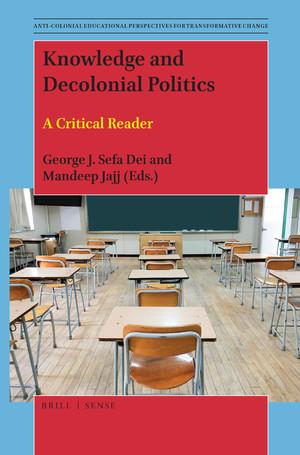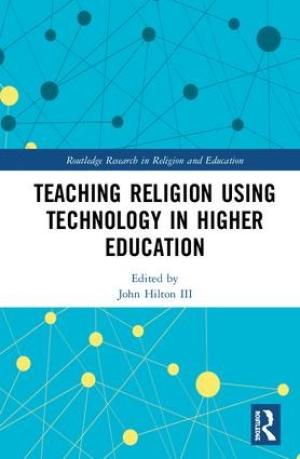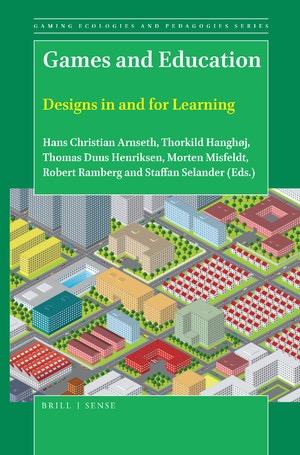Resources

Journal Issue

Journal Issue

Journal Issue

In theological education, students who go to school online are frequently students who remain at home throughout their degree programs serving in faith communities they know well. This reality affects their formation and affects how teachers approach it. There are some advantages to the situation. As Elaine Ramshaw writes about teaching pastoral care online: “The fact that many of the students are also concurrently doing what one might call ‘embedded’ parish work, and that some of them are the pastoral leaders of their congregations, can be a plus for teaching in any of the practical fields.”[i] For example, in a class on pastoral leadership I might teach students how to lead decision-making via consensus process. An assignment option for that class might then be to lead their church board through consensus process. Assignments carried out in students’ ministry contexts represent what in higher education are called “authentic assessments.” Defined as real-world activities mirroring the very sorts of tasks students will practice in the professions for which they are preparing, authentic assessments are widely valued for their role in formation. They are also sometimes perceived to be tricky to create. But when online students can simply turn a camera on in the place they already work, authentic assessment becomes easier. I have learned several ways to take advantage of the video camera in assessing ministerial formation. The first thing I tell students is that because it is their development I care about, I will be watching and listening to them, not their congregants. They should train the camera on themselves and not worry about capturing everybody on film. They will upload the video to a secure channel, I will be the only one viewing it, and they can delete it once I have done so. Moreover, I tell them, I’m not assessing their congregants. Activities do not have to go perfectly for me to get a sense of students’ leadership abilities. Whether or not, for example, their board actually reaches consensus on a decision is not the point. These reminders help students help their folks to relax, act naturally, and forget about the camera. The hope is that I will, in fact, see a truly authentic ministry event. It appears to work. The video camera becomes quite literally like a fly on a wall that ceases to be noticed after a while. Therefore, filming has certain advantages over direct personal observation of students, which in face-to-face education is often considered the ideal way to assess student formation. The second thing I tell students is that they must watch their videos. I was surprised when I first started teaching online to discover how often they did not. I appreciate the self-consciousness and even pain associated with seeing a tape of oneself, but one of the best ways to learn how to be a minister is to watch oneself in the act of ministering. Videotaping uniquely allows for this kind of learning. The third thing I tell my students is that by watching a video of them in action, I will learn more about their context and gain appreciation for the challenges they face. The videos give me access, after all, not only to students whom I would never see otherwise because of distance, but also to real conversations being held in real church parlors, basements, and Sunday School rooms. It doesn’t get more ‘authentic’ than watching a bunch of folks sitting around a table sipping Diet Cokes, quieting fussy babies, and occasionally digressing from the exercise at hand to rehash last night’s big game. Watching the videos makes me realize how difficult the skills I’ve taught in class can be when practiced authentically. I cannot help but see what goes on. I see all the distractions and interruptions that come with trying to get church folk to have a serious conversation. I’ve watched my students struggle to manage dominant personalities, deflect obvious attempts at alternative agendas, and finish exercises in time to get to the second service. I have even watched somebody suffer a stroke in the middle of a meeting. A final advantage of authentic assessment via videotape is that teachers come to appreciate the true breadth and complexity of ministerial formation. [i] Elaine Ramshaw, “Reflections on Teaching Pastoral Care Online,” Reflective Practice: Formation and Supervision in Ministry, Volume 31 (2011), 62. This entire volume of Reflective Practice is dedicated to formation and supervision in a digital age.

Click Here for Book Review Knowledge and Decolonial Politics: A Critical Reader offers the perspectives of educators and learners within current developmental settings, highlighting the systemic barriers faced whilst trying to implement decolonial pedagogies and practices. In the hope to challenge the dominance of Western Eurocentric thought in education and international development, the authors of this book offer counter narratives to promote the use of embodied cultural knowledges and histories, along with Indigenous perspectives, in order to subvert Western knowledge systems which are inherently colonial in nature. Changing education as we know it today requires creating spaces in which multiple knowledges can co-exist and benefit from one another. These spaces will ensure the continuity of decolonial practices and shape the intellectual politics of future generations. (From the Publisher)

Click Here for Book Review The educational technology sector is growing fast, with schools, colleges and universities more than ever looking for the best ways to use technology in the classroom. At the same time, there is an increasing appetite for learning and teaching practices to be backed up by evidence. However, there are few resources that bring these two things together. Enhancing Learning and Teaching with Technology brings together researchers, technologists and educators to discuss how technology can be designed and used for learning and teaching to best effect. It addresses what the research says about: - how and why learning happens and how different technologies can enhance it; - engaging a variety of learners through technology and helping them benefit from it; - and how technology can support teaching. The book is an accessible introduction to learning and teaching with technology for teachers and other educational professionals, regardless of their experience with using technology for education. (From the Publisher)

Click Here for Book Review A qualitatively designed, intentionally dialogic strategy for understanding the depth of normalized violence and constructing pedagogies for promoting peace. - Ryan Korstange, Middle Tennessee State University Pedagogies for Building Cultures of Peace explores how normalizations of violence are constructed from the perspective of young adults and how pedagogies can be created toward building cultures of peace. Findings show the diverse ways in which enmity (or the dehumanized other) is constructed, including through socialization processes, associating difference as deficient, systems of exclusion, disengaged citizenship, and cultures of competition and rivalry. Results also show how critical adult education can reveal hidden forms of power embedded within normalizations of violence, creating opportunities for peacebuilding education. By collaboratively engaging in peace research with youth, and by explicitly exploring power as a central component of violence, violence transformation and peacebuilding education led by youth become imaginable. (From the Publisher)

Course design in online learning juggles a range of factors to produce an effective learning environment. For instance, most of us who teach online must navigate the expectations of our institution. Maybe a requirement to adhere to some external standard, like Quality Matters, exists. Perhaps the learning management system defines what one might do. Some schools require the use of a design consultant, while others throw faculty into the deep end of course development without any support. And, then, of course, we always must account for the students. I tend to boil online class structure down to the following: consistency matters, less is more, clarity in all things, and never lose the personal, and course design is never done. Consistency matters speaks to the basic principle of setting the same pattern week in and week out. The freedom of asynchronous online learning (work on your own from anywhere, anytime) differs markedly from a student knowing to turn up on specific days, at a given time, and in a set location. Many undergraduates still need the discipline built in. Setting repetitive due dates, for instance, allows a learner to integrate the class into her or his calendar and to schedule other obligations (e.g., work, childcare, recreation) accordingly. Organizing the course materials via a weekly agenda in a fixed place enables the students to know where to look for readings/videos and how to determine what to turn in, where, and by when. Less is more applies in several areas. Only the rare student will read every line of my syllabus, carefully parse my directions, or watch every video. I try to help here. Creating my syllabus using Moodle’s “Book” for example, allows me to generate a Table of Contents. Students then might skip to what they prioritize (like grading) and only refer to policies (academic integrity, disability accommodation, etc.) when needed. I also use this function for the weekly assignments. Students can bypass the learning goals the University wants posted and immediately access the readings/videos and the worksheets. Similarly, in video presentations, if I can do 2-4 minutes rather than 10 or 15, I stand a better chance of a student listening all the way through. But even when I go long, I cannot waste their time. Good video production requires thinking through what is most important, planning out my commentary and visuals, and speaking at the pace of something like a Crash Course lesson. Students then tend to stick with it and even re-view when they need a second or third shot at an idea because it is not burdensome or scattered. Clarity in all things means avoiding confusion by providing step-by-step instructions for every assignment, a rubric for how it will be assessed, links to technical support for what students might need to accomplish it (such as how to make a video), statements about when precisely to anticipate feedback, and a forum to pose their questions–again with response time being key. Online learning lacks the luxury of chatting face-to-face in class about what I want to see or how the grading is coming along. Instead, I must anticipate, as well as draw from experience, what kinds of questions students raise and plan accordingly to answer them at the outset. Never lose the personal takes me back to when I first started out in online and most of my students brought with them the expectations of a face-to-face environment. They wanted to see my face and hear my voice. They wanted not automatically graded assignments, but my personal comments. I also learned the value of students hearing from me “live” every week, even when everything might be running like clockwork. A weekly note to the class or a quick video about the connection of a current event to what we are doing reminds them I am there and active and paying attention. Sending individual feedback on something as mundane as a discussion board post says I take their ideas seriously. I also, then, get more students making appointments with me to work through issues or to chat about their interests. These interactions make use of my expertise in more areas than content delivery and that is, as we all know, where most authentic learning happens. Finally, course design is never done. Each iteration of a class teaches us something new about what works and what we can do better. Making the time to reflect on the specifics, or to learn new tricks by engaging with other faculty, brings pedagogy to the forefront and that, to my mind, always benefits the learning experience.

This edited volume – the first of its kind – is incredibly valuable for teachers interested in integrating particular technologies into their classrooms. Among the hundreds of scholarly articles and dozens of books about how to incorporate technology into teaching and learning, such as Michelle Miller’s Minds Online (2016, Harvard University Press) and José Antonio Bowen’s Teaching Naked (2012, Jossey-Bass), some articles have focused specifically on the teaching and learning of religion. For example, recent scholarship has shown how 360-degree cameras and virtual reality headsets allow students to become visually immersed in distant religious environments, facilitating an empathetic understanding and ethnographic analysis of religious place, ritual, and behavior (Johnson, “Using virtual reality,” Teaching Theology and Religion 21[2018]: 228-241). Another article looks at how social media technologies might increase student engagement and active learning, for example, when students tweet about experiences of martyrdom from the perspective of the martyr, the crowd, and the persecutors, and compare types of media used to communicate from a position of power and political or social vulnerability (Warren, “Teaching with Technology,” Teaching Theology and Religion 19 [2016]: 309-319). However, this is the first edited volume on the topic that explicitly addresses those who teach religion in higher education, and as someone who studies digital technologies and uses them for various pedagogical purposes, I thoroughly enjoyed reading it. I appreciated the diversity of technologies discussed, and the candor with which scholars acknowledged that not all technologies enhance or improve student learning. Richard Newton discusses strategies for using mobile devices as learning tools, such as providing backchannels (otherwise known as “live-tweeting”) for students to discuss and address questions while watching in-class films. David Kniep has students create podcasts interviewing religious practitioners, describing how the course challenged or deepened their prior understanding, and connecting scriptural texts to their contemporary world. Renate Hood argues that student response systems can increase student motivation, enhance classroom interaction, and lower students’ apprehension about engaging with religious, ethical, and personal topics. Kristy Slominski shows how clickers can encourage students to take stances on complex religious issues and acknowledge the range of perspectives within the classroom. Kyle Oliver discusses a variety of new media tools to help students visualize sacred sites, including virtual reality technologies such as Google Expeditions, Sites in 3D, and Google Earth, and online videos and picture repositories such as Sacred Destinations and Folkways. Scholars also address how to leverage social media practices in and out of the classroom. Rob O’Lynn emphasizes the relational quality of social media. Brooke Lester identifies both positive and negative outcomes of social media use: while it can help students form connections and communities, it limits anonymity and sometimes subjects users to online abuse. Anthony Sweat shows how blended learning can help students achieve lower-order outcomes outside of class so that they can focus on higher-order outcomes of analyzing, evaluating, and creating in the classroom. Christopher Heard and Steven Rouse demonstrate that integrating interactive fiction stories did not increase motivation among students, suggesting that not all technology adaptation will improve learning outcomes. Finally, contributors explore ways that technology can expand the classroom, for example, through virtual guest lectures with experts in the field or through massive online open seminars.

We live in a time of educational transformations towards more 21st century pedagogies and learning. In the digital age children and young people need to learn critical thinking, creativity and innovation and the ability to solve complex problems and challenges. Traditional pedagogies are in crisis and many pupils experience school as both boring and irrelevant. As a response educators and researchers need to engage in transforming education through the invention of new designs in and for learning. This book explores how games can provide new ideas and new designs for future education. Computer games have become hugely popular and engaging, but as is apparent in this book, games are not magical solutions to making education more engaging, fun and relevant. Games and Education explores new designs in and for learning and offer inspiration to teachers, technologists and researchers interested in changing educational practices. Based on contributions from Scandinavian researchers, the book highlights participatory approaches to research and practice by providing more realistic experiences and models of how games can facilitate learning in school. (From the Publisher)
Wabash Center Staff Contact
Sarah Farmer, Ph.D
Associate Director
Wabash Center
farmers@wabash.edu